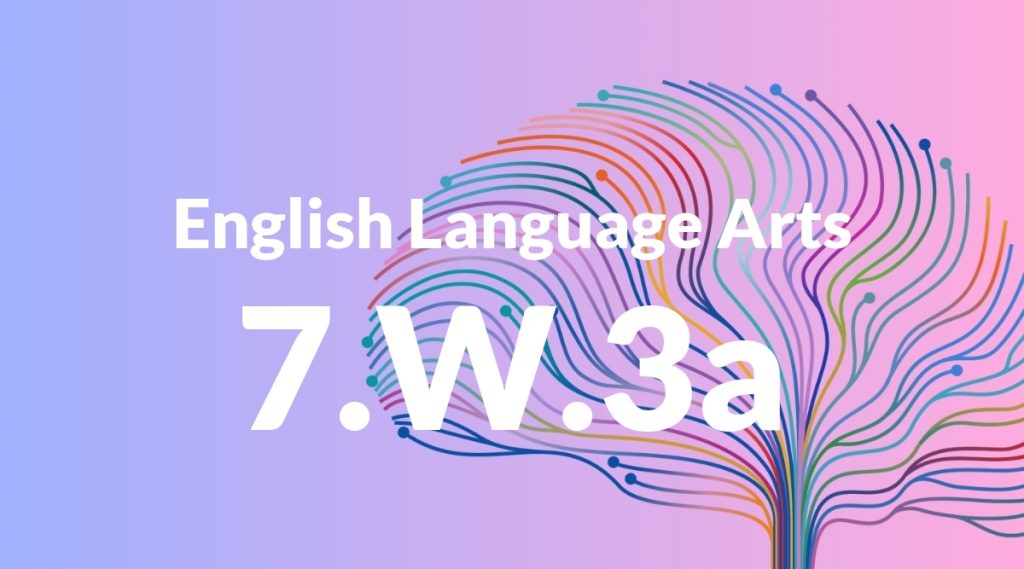Standard: 7.W.3 – Write narratives to develop real or imagined experiences or events using effective technique, relevant descriptive details, and well-structured event sequences.
Grade level: Grade 7
Subject: English Language Arts
Domain: Writing
Teacher Overview
This standard focuses on developing students’ ability to write narratives that effectively convey real or imagined experiences. It emphasizes the use of effective writing techniques, detailed descriptions, and well-organized event sequences. Mastering this standard is crucial as it enhances students’ overall writing skills and their ability to express complex ideas clearly and creatively. Students should have a foundational understanding of narrative elements and basic writing techniques. This includes familiarity with plot structure, character development, and the use of descriptive language.
By mastering this standard, students will be equipped to tackle more advanced narrative techniques and engage in peer reviews and self-assessments to further refine their writing skills.
Common Misconception 1
A common misconception is that narratives are limited to fictional stories. This is incorrect because narratives can also include personal essays and memoirs, which are based on real experiences.
Intervention 1
To address this misconception, provide students with a variety of narrative examples, including both fictional stories and real-life accounts. Discuss the similarities and differences between these types of narratives.
Common Misconception 2
Another misconception is that narratives do not require a clear structure. This is incorrect because a well-structured plot with a clear beginning, middle, and end is essential for creating a coherent and engaging narrative.
Intervention 2
Use graphic organizers and story maps to help students plan and structure their narratives. Emphasize the importance of each part of the plot and how they contribute to the overall story.
Prerequisite Knowledge
Students should have a basic understanding of narrative structure, including the elements of plot, character, setting, and theme. They should also be familiar with basic writing techniques such as sentence structure, paragraph organization, and the use of descriptive language.
Subsequent Knowledge
After mastering this standard, students will develop advanced narrative techniques, such as the use of symbolism, foreshadowing, and varied narrative perspectives. They will also be able to critique and improve their own and others’ writing through peer review and self-assessment.
Instructional Activities
- Writing and sharing personal narratives
- Analyzing and discussing narrative examples
- Using graphic organizers to plan narratives
- Engaging in peer review sessions
- Creating story maps




